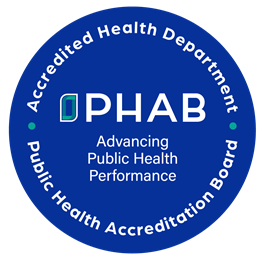Choosing the right water treatment system for your home can be challenging and expensive. There are many different types of treatment systems available and there are often several different ways to address a water quality problem. No one type of treatment system is appropriate for all situations.
Some water supplies may be subject to contamination by bacteria or other harmful pathogens. Water disinfection systems are used to ensure the potability of your water supply and require special consideration. More information about waterborne pathogens and disinfection can be found on our "Waterborne Illness & Disinfection" webpage.
Common Types of Household Treatment Systems
- Sediment Filters -Sediment filters are intended to catch physical particles suspended in your water. These filters come in all different shapes and sizes and use a variety of media. The size of the particles caught depends on the pore size or grade of the filter. Cartridge style filters that fit into an in-line housing are the most common. They are compact and cheap, but require frequent replacement. Larger granular filters consist of a loose media usually packed into a canister are also available. Higher end models may also be equipped with a backwashing cycle to flush out captured particles and redistribute the media.
- Activated Carbon "Charcoal" Filters - Carbon filters are primarily used to remove dissolved minerals and other chemicals from drinking water and also provide some filtration of larger particles. They are by far the most popular type of water treatment because they are effective at removing chlorine as well as a wide range of other tastes and odors. These filters come in all shapes and sizes from pitchers for small quantities of drinking water to whole house filters. Cartridge style carbon filters that fit into an in-line housing are the most common type for whole house treatment. They are compact and relatively cheap, but require frequent replacement. Larger granular filters consisting of a loose media packed into a canister are also available. Higher end models may also be equipped with a backwashing cycle to flush out captured particles and redistribute the media. Removal of dissolved minerals and other chemicals occurs because of a chemical exchange process which eventually saturates the media requiring it to be replaced.
- Water Softeners - Softeners are a very common type of water treatment system used to remove hardness and small amounts of iron from water. Typically, these systems consist of a large canister filled with a special ion exchange media. Dissolved minerals in the water are exchanged for ions (sodium) on the surface of the media as the water flows through it. A separate bin filled with salt brine is used to regenerate the media periodically. This process is often referred to a "backwashing". The ion exchange media will last for many years, but the salt bin must be refilled periodically.
- Iron / Manganese Removal Systems -There are several different types of iron/manganese removal systems. Lower levels of dissolved iron/manganese can be removed by water softeners. Disposable cartridge-type "iron filters" that fit into an in-line housing also available to remove iron and manganese without softening. These filters contain special ion exchange media that captures iron eventually becoming saturated and requiring replacement. Re-usable "greensand" filters consist of a large canister containing a special media that oxidizes and captures iron and manganese. This media is periodically regenerated using a solution similar to "backwashing" in water softeners. Higher levels of iron and manganese require oxidation and filtration systems. In this type of treatment, a chemical oxidizer is added (typically chlorine) which causes the dissolved metals to form particles and precipitate out of the water. These particles can then be filtered out like other types of sediment.
- Acid Neutralizers -This type of treatment system is used to neutralize the pH of highly acidic water. They typically consist of a large canister or bin filled with a calcite media that the water flows through. The calcite slowly dissolves neutralizing the acidity of water passing through it.
- Ultraviolet (UV) Disinfection - Most frequently used in residential settings. An ultraviolet disinfection system consists of a steel tube with a "high-energy" light bulb inside that irradiates the water passing through it. This sterilizes any organisms passing through it so they can no longer cause illness. UV disinfection systems are in-line units which are relatively simple to install and can easily be mounted in a basement or closet. The only maintenance involved is occasional cleaning and replacing the bulb when required. It is important to note ultraviolet disinfection only disinfects water passing through the unit, and will have no effect on contamination introduced downstream. Because of this, the system should be installed at the point of entry to the building.
- Chlorination - Widely used in municipal and small commercial applications. These systems inject small amounts of a concentrated chlorine solution into the water as it is being used. A properly designed chlorination system is nearly 100% effective at destroying pathogens. However, these systems require substantial maintenance, routine monitoring and thorough understanding of how the system operates. This type of disinfection is widely used in larger water systems serving multiple buildings because it provides protection from contamination introduced downstream. The chlorine travels through the distribution system with water continuing to kill any pathogens encountered later on.
- Reverse Osmosis (RO) Filtration Systems - Reverse osmosis systems are the most intensive treatment available. They will remove all forms of particulate matter, including bacteria and viruses, and most types of chemical contamination from drinking water. In this type of treatment, water is forced through a semi-permeable barrier with microscopic holes just large enough to allow water molecules to pass through but stop anything larger. This yields small quantities of nearly pure water comparable to distillation. Due to the cost of these treatment units and low flow rates, most household units are small point-of-use systems used for special purposes. Typically, reverse osmosis systems are mounted to the kitchen sink and are only accessible through a special tap.
Selecting a Water Treatment System
A good diagnosis of your water quality problem will save you a great deal of time and money. Usually this requires basic testing and some knowledge when interpreting the results. Testing recommendations from the New York State Department of Health can be found on our "Water Quality Testing" page. For most common water quality problems, your treatment supplier can use these results to help you determine which type of treatment is most appropriate for your water system. You should consult with several suppliers before making your decision. Treatment recommendations and the associated cost may vary greatly from supplier to supplier.

If you are choosing your treatment system yourself, or you need to find out which systems are effective at reducing specific contaminants in drinking water, please consult the NSF International webpage "Selecting a Home Treatment System". NSF International is an independent organization that certifies a wide range of products including water treatment systems. Selecting NSF certified products will ensure that you will receive the best treatment system available for your needs.


